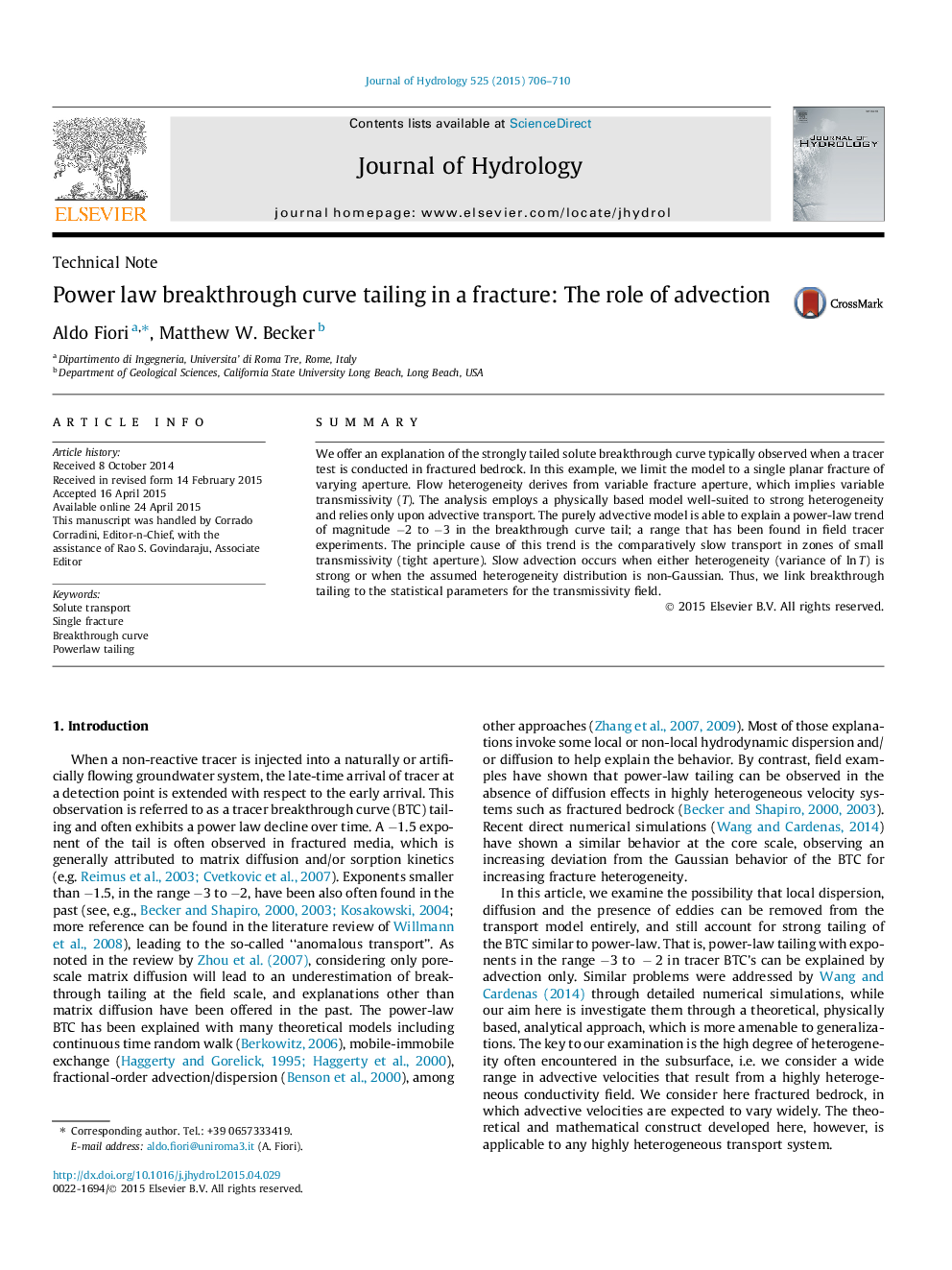| Article ID | Journal | Published Year | Pages | File Type |
|---|---|---|---|---|
| 6410671 | Journal of Hydrology | 2015 | 5 Pages |
â¢We examine non-gaussian behavior of the BTC in a single fracture.â¢We make use of a theoretical model based on macro-advection.â¢Strong tailing and non-gaussianity depends on the aperture heterogeneity.â¢Exponents of the BTC tails are compatible with measured ones.â¢The modeled BTC is linked directly to the statistical parameters of the transmissivity field.
SummaryWe offer an explanation of the strongly tailed solute breakthrough curve typically observed when a tracer test is conducted in fractured bedrock. In this example, we limit the model to a single planar fracture of varying aperture. Flow heterogeneity derives from variable fracture aperture, which implies variable transmissivity (T). The analysis employs a physically based model well-suited to strong heterogeneity and relies only upon advective transport. The purely advective model is able to explain a power-law trend of magnitude â2 to â3 in the breakthrough curve tail; a range that has been found in field tracer experiments. The principle cause of this trend is the comparatively slow transport in zones of small transmissivity (tight aperture). Slow advection occurs when either heterogeneity (variance of lnT) is strong or when the assumed heterogeneity distribution is non-Gaussian. Thus, we link breakthrough tailing to the statistical parameters for the transmissivity field.
